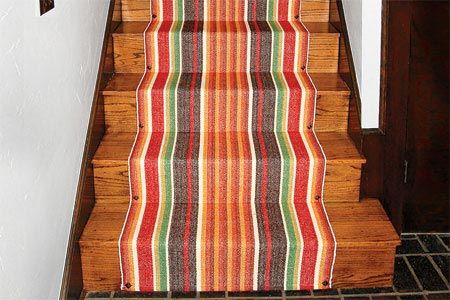Project details
Skill
Cost
Estimated Time
With the right advice and a bit of patience, you can install a beautiful stair runner that enhances your home’s style and adds traction to slippery steps. This do-it-yourself (DIY) project is an affordable alternative to professional installation. Whether you’re looking to improve your home’s style, increase safety, or remove old carpeting from your stairs, get step-by-step instructions in our guide.
Tools and Materials for Stair Runner Installation
- Carpet padding or felt underlayment
- Double-sided carpet tape
- Hammer
- Painter’s 5-in-1 tool
- Painter’s tape
- Pencil
- Scissors or utility knife
- Square upholstery tacks (optional for a decorative finish)
- Stair runner (measure your stairs to determine the length needed)
- Staple gun and staples
- Tape measure
Preparing Your Staircase for the Runner
This step makes sure your stairs are clean, in good condition, and ready for the new runner.
Cleaning and Inspecting the Stairs
Start by deep cleaning your stairs. Remove any dirt, dust, or debris that could interfere with the adhesion of the carpet tape or padding. While cleaning, inspect each step for damage. Repair any loose boards, protruding nails, or other issues before moving on.
Measuring and Marking
Measure the length and width of your stairs, including the depth of each tread and the height of each riser. We recommend using painter’s tape to mark the edges where you will place the runner to check that it’s centered. This visual guide will help you maintain a straight line during installation.
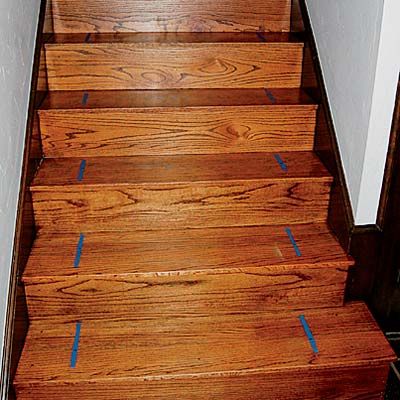
Choosing the Right Stair Runner
Stair runners come in various materials, each with its own benefits. Consider your style, durability needs, and material cost when making your choice:
- Natural fibers (like sisal or jute): Eco-friendly options that add texture but may be less comfortable underfoot
- Nylon: Highly durable and easy to clean, ideal for high-traffic areas
- Polypropylene: Affordable and stain-resistant but less durable than wool or nylon
- Wool: Durable and naturally stain-resistant but more expensive
Considering Cost and Durability
While cost is important, you want to balance it with durability. A higher-quality runner might be more expensive but could save money in the long run by lasting longer. Consider the traffic your stairs receive and choose a runner that can withstand daily wear and tear. Off-the-shelf runners can be an excellent option for budget-conscious homeowners.
Step-by-Step Stair Runner Installation Process
With your stairs prepped and materials gathered, you’re ready to begin the installation process. Follow these steps for a professional-looking result.
- Laying the padding: Start by cutting your carpet padding or felt underlayment to fit each stair tread. The padding should be slightly narrower than your runner to prevent bunching at the edges. Secure the padding to each tread using double-sided carpet tape, making it smooth and wrinkle-free.
- Securing the runner: Beginning at the top of the stairs, unroll your runner and align it with your guide marks. Secure the top edge with staples. Work your way down the stairs, pulling the runner taut as you go. Use staples in the corners of each tread and along the top and bottom edges to hold the runner in place.
- Wrapping around stair nosing: For a polished look, wrap the runner around the nosing (the front edge) of each step. Use a painter’s 5-in-1 tool to smooth the runner over the nosing and secure it with staples underneath. This step looks professional and helps prevent the runner from slipping.
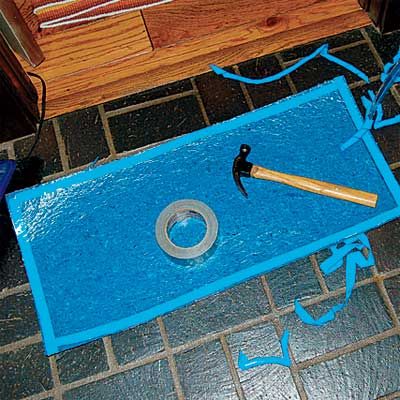
Staying Safe During Stair Runner Installation
Safety should always be a top priority during any DIY project. This process guarantees the success of your project, your well-being, and that of others in your home.
- Managing the work area: Keep your work area clean and organized to prevent accidents. This step includes promptly cleaning up sawdust, keeping tools and materials in designated areas, and making sure nothing obstructs the stairs during the installation. A tidy workspace reduces the risk of tripping or accidentally cutting yourself.
- Using tools correctly: Before you start, make sure you understand how to use each tool. Know how to load and use a staple gun properly, cut safely with a utility knife, and use a hammer and other tools correctly. Always follow the manufacturer’s instructions and safety guidelines for your tools.
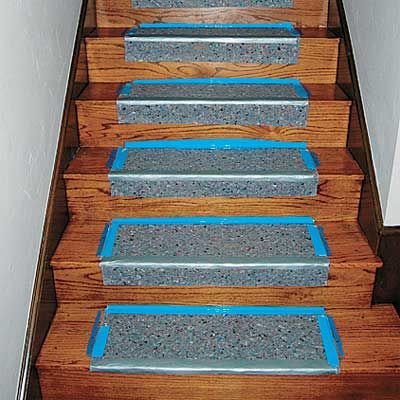
Tips for a Professional-Looking Stair Runner Finish
Achieving a pro finish requires attention to detail and some extra touches that elevate your stair runner’s overall appearance.
Adding Decorative Elements
For a decorative touch, consider adding stair rods or using ornamental tacks. Place these tacks along the edges of the runner where they meet the stair treads for a classic, tailored look.
Dealing with Corners and Edges
Pay special attention to corners and edges, as these areas can make or break the look of your installation. Use a staple gun to secure the runner tightly around corners, ensuring there are no gaps or loose sections. Trim any excess material carefully with sharp scissors or a utility knife for clean edges.
Inspecting Your Work
Once you have the runner fully installed, take some time to inspect your work. Look for areas where you haven’t secured the runner properly and re-staple any sections as needed. Hammer all staples in fully to prevent them from catching on socks or shoes.
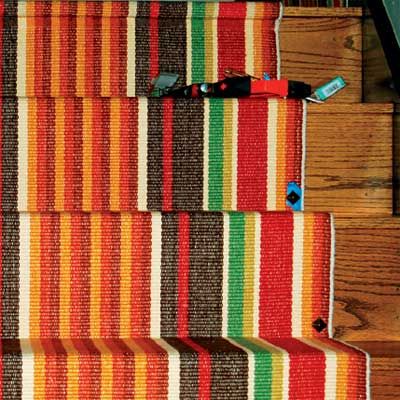
Troubleshooting Common Stair Runner Installation Issues
Even with careful planning and execution, you might encounter some challenges during your installation. Here are some common issues and how to address them:
- Gaps and bubbles: If you notice gaps between the runner and the stairs or bubbles in the fabric, you’ll need to reattach those sections. Carefully remove the staples in the problem area, smooth out the runner, and reattach it, ensuring it’s pulled taut before securing.
- Loose sections: High-traffic areas of your runner may become loose after a while. To fix this, remove the staples in the loose section, reposition the runner, and reattach them with new staples. If the padding has shifted, you may also need to readjust or replace it.
- Wear and tear: In busy homes, stair runners can begin to show signs of wear and tear relatively quickly. Keep an eye on high-use areas and be ready to adjust, repair or clean these sections more frequently. Remember that a little upkeep can greatly extend the life and look of your stair runner.
DIY vs. Professional Stair Runner Installation
The main appeal of installing a stair runner yourself is cost savings. Let’s look at some common costs:
DIY installation:
- Runner material: $14–$36* per step (depending on quality and size)
- Tools and materials: $80–$100
- Total DIY cost (for 13 steps): $262–$568
Professional runner installation:
- Labor: $1.50–$3 per square foot
- Carpet disposal: $0.40–$0.50 per square foot
*Cost information based on 2024 reports from Angi and The Home Depot.
DIY installation does mean savings, but consider the value of your time and the quality of the finished product. The bulk of the cost is in material, which you’ll need either way. If you’re confident in your DIY skills and have the time to dedicate to the project, installing your own stair runner can be a rewarding and cost-effective option. Take your time, follow the steps carefully, and seek advice if you encounter challenges.
